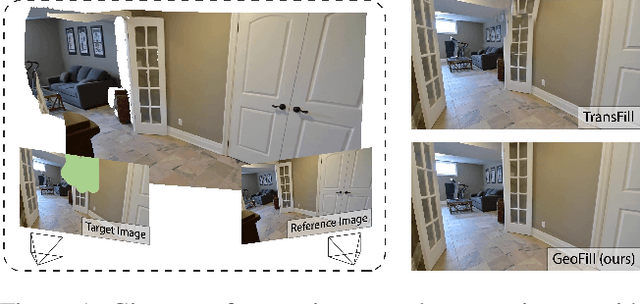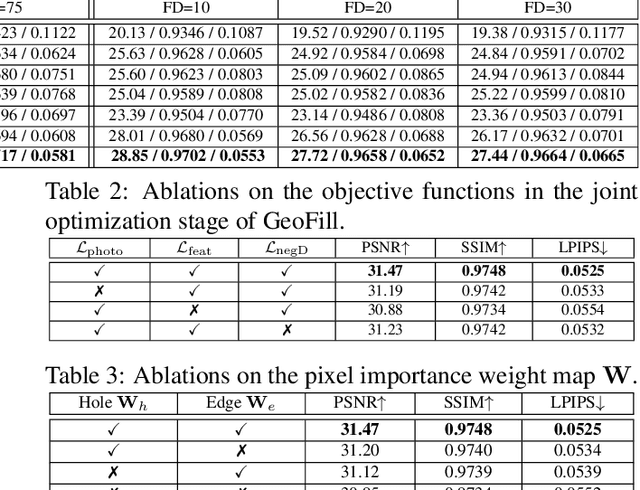GeoFill: Reference-Based Image Inpainting of Scenes with Complex Geometry
Paper and Code
Jan 20, 2022



Reference-guided image inpainting restores image pixels by leveraging the content from another reference image. The previous state-of-the-art, TransFill, warps the source image with multiple homographies, and fuses them together for hole filling. Inspired by structure from motion pipelines and recent progress in monocular depth estimation, we propose a more principled approach that does not require heuristic planar assumptions. We leverage a monocular depth estimate and predict relative pose between cameras, then align the reference image to the target by a differentiable 3D reprojection and a joint optimization of relative pose and depth map scale and offset. Our approach achieves state-of-the-art performance on both RealEstate10K and MannequinChallenge dataset with large baselines, complex geometry and extreme camera motions. We experimentally verify our approach is also better at handling large holes.
 Add to Chrome
Add to Chrome Add to Firefox
Add to Firefox Add to Edge
Add to Edge